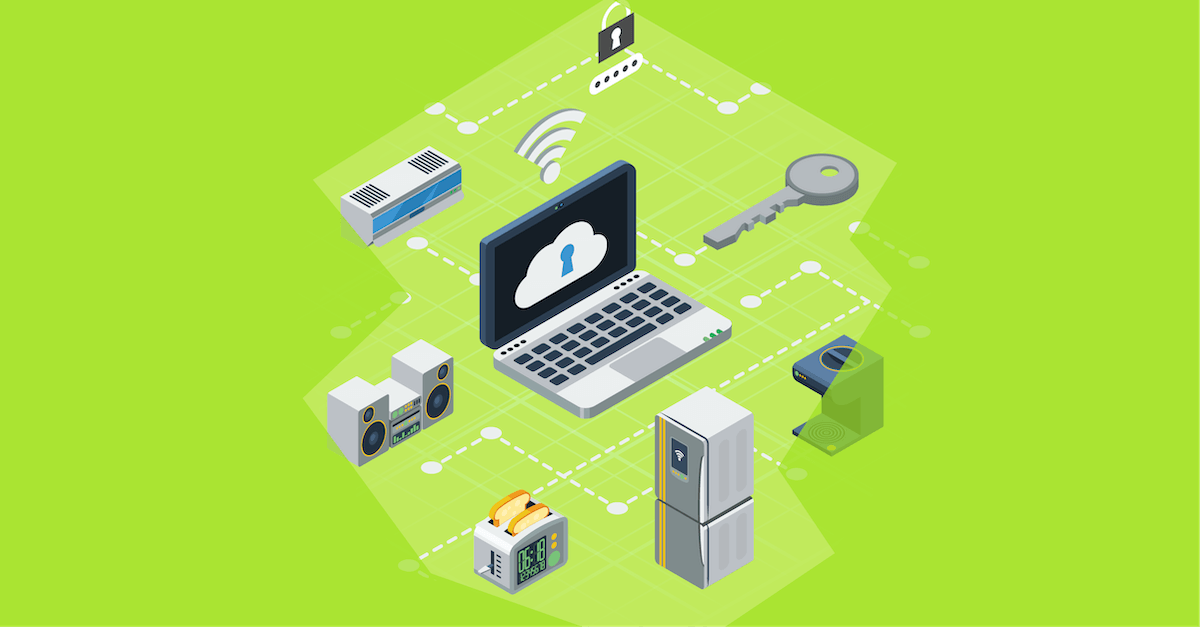

Internet-of-things (IoT) devices are used in almost all industries for various use cases. Sensing what’s happening in the physical world and transmitting data wirelessly allows developers to collect, process, and analyze data for healthcare, manufacturing, home automation, and more. That’s where IoT security comes into play.
Because they’re often very simple devices produced in mass quantities—such as those used to develop visible supply chain solutions—it’s easy to overlook security. Malicious actors are exploiting this oversight to hack into vulnerable systems. With over 15 billion IoT devices connected worldwide—a number expected to exceed 32 billion by 2030—securing these devices has never been more critical.
One of the reasons IoT devices are so helpful is that they’re cheap and easy to build and deploy. However, compared to standard computers, they usually have limited processing power, memory, and storage. These limitations can make it more challenging to run resource-intensive security programs. Developers play a crucial role in addressing these challenges by implementing robust security measures tailored to the unique constraints of IoT devices.
Another complicating factor is the diversity of IoT environments. They’re spread across operating systems, hardware equipment, and communication protocols, so developing standardized security practices is almost impossible. Devices are often incompatible and may not have secure communication protocols when they are compatible.
IoT networks can be extensive, with each device providing a potential entry point for hackers. Networks with more devices are more vulnerable to attack.
Some security weaknesses in IoT devices are the same as those in all computing devices. Others are unique to them. All are more challenging, given the number of devices and their limited applications. The most common threats to IoT devices include the following:
Despite their limited computing power, IoT devices are still vulnerable to malware and viruses. Because they often lack security measures, hackers can exploit them by injecting malicious software. Ransomware attacks look different on IoT systems, however. Instead of encrypting data and holding it for ransom, IoT ransomware attacks target the devices’ functionality.
Controlling one IoT device doesn’t give a hacker much power. Controlling an entire army of them, however, does. For example, malicious actors can use Mirai malware attacks to infect IoT devices and take control of them. The compromised devices can then be harnessed to perform attacks or other actions. They’re often used to conduct a distributed denial-of-service (DDoS) attack. Botnets can also be controlled and redirected to perform different tasks or stopped from performing their primary tasks.
IoT devices often transmit sensitive data without adequate protection. Machine-in-the-middle (MITM) attacks can intercept and possibly alter this information between an IoT device and the server with which it’s communicating. An MITM attack can result in a data breach or give a hacker control of a device. If an MITM attack compromises a home security system, the hacker could gain unauthorized access to and control over cameras, lighting, and security systems.
Rogue devices can also exploit an IoT network. These are additional or replacement devices that connect to a network without the administrator’s knowledge or approval. With a rogue device, a bad actor can create an entry point into the network. Hackers can use these entry points to gain unauthorized access to systems, extract sensitive data, or disrupt the network.
The fractured nature of IoT devices and networks means there’s no single approach to IoT security. The following best practices will help development teams cover multiple avenues of attack to secure all of their devices and networks.
Before developers can secure their IoT devices, they must know how many they have and where they are located. A comprehensive hardware bill of materials (HBOM) should include all IoT devices. This will help teams identify unauthorized devices, apply security patches, and manage firmware updates. Each device should be physically labeled and geotagged so physical tags can be linked to digital records.
Strong access controls limit network access to authorized devices. Start with a strong firewall and then implement measures such as multi-factor authentication (MFA) that verify devices every time they attempt to connect to the network.
Use digital certificates to authenticate devices and block malicious connection attempts. Set strong, unique passwords for each device and avoid default user names.
Role-based access controls grant only the minimum access necessary for users and devices to do their jobs. This follows the principle of least privilege and limits potential damage from compromised credentials.
Data encryption protocols such as Transport Layer Security (TLS) protect data at rest and during transit. If hackers intercept encrypted data, they can’t read it without the decryption key. Development teams should also use secure key management procedures to guard encryption keys and handle generating, storing, and rotating them.
Just as they do with other types of software, developers should keep IoT devices patched and updated. Make sure firmware is updated to install new security features. Automated updates will make this easier. Teams should include IoT devices in their patch management procedures.
To limit damage if an IoT device is compromised, developers should segment the IoT network so it’s not connected to critical systems. Microsegmentation divides the network into zones that can be secured more efficiently and prevent lateral movement in case of a breach.
In addition to securing the software and networks, teams should also secure the physical devices. Choose devices with a tamper-resistant design, such as a secure boot. Implement physical security measures to protect devices from theft. Hardware security modules protect sensitive data with a physical device. They store cryptographic keys and perform associated operations.
Securing IoT devices requires a proactive approach from the very beginning. With Kiuwan’s end-to-end application security platform, you can shift left and build secure, resilient applications that stand up to the unique challenges of IoT security. Request a free demo to see how Kiuwan can help safeguard your IoT deployments.


